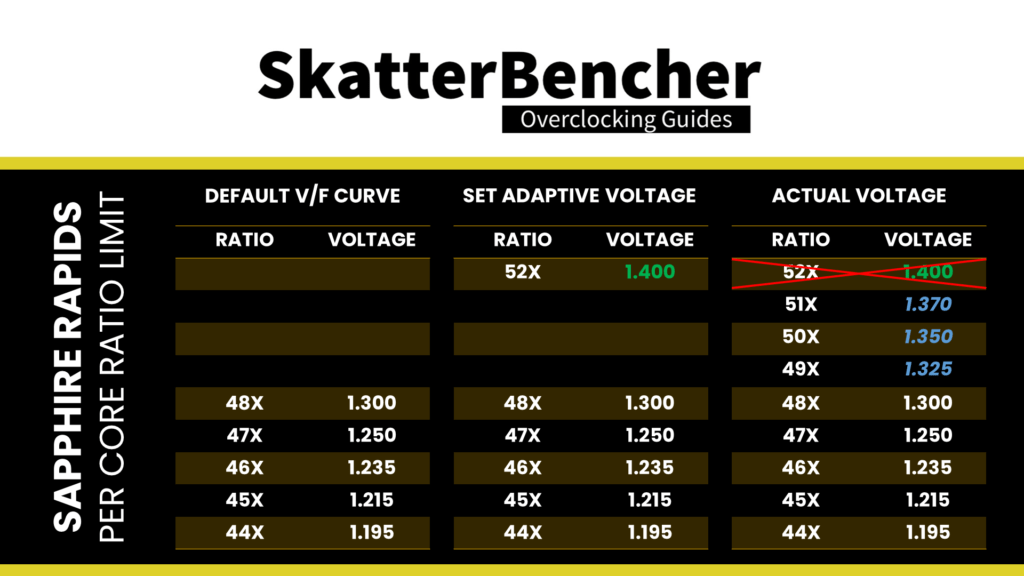Intel Per Core Ratio Limit allows you to set a maximum CPU Core Ratio for every core inside your CPU individually.

Per Core Ratio Limit Overview
The feature was first introduced on Broadwell-E in 2016 and was introduced on mainstream desktop with Rocket Lake in March 2021. It is an extension of the Intel Turbo Boost Max Technology 3.0 which introduces the concept of higher-clocking favored cores in a multi-core processor.
A big change on Rocket Lake compared to previous generations of Intel CPUs on mainstream desktop is that each of the processor cores has its own PLL. Each core having its own PLL means the processor cores can operate at independent frequencies. The Per Core Ratio Limit feature allows us to configure each physical core to its own maximum boost ratio. This enables two important new avenues for CPU overclocking.
- First, it allows users to individually overclock each of the cores and find the maximum stable frequency.
- Second, it allows users to set an aggressive by core usage overclock while constraining the worst cores.
Note that while each of the CPU cores now has its own PLL (and its own V/F curve), for processors without FIVR and where the cores share a single VccIA or VccCore voltage rail, only one voltage is applied across all cores.
Alder Lake and Raptor Lake inherit the overclocking feature from Rocket Lake and offers ratio limits for each of the P-cores and each cluster of 4 E-cores.
Ratio Limit & Adaptive Voltage
When we set a ratio limit, counter-intuitively, this ratio doesn’t act as a core-specific OC Ratio but as a means to limit what parts of the V/F curve can be used.
Let’s say we have a CPU that can run up to 52X.at 1.40V. If we set the ratio limit for a core to 51X, the CPU core will boost up to 5.1 GHz at a voltage interpolated between 52X at 1.40V and the next lower factory-fused V/F point.
